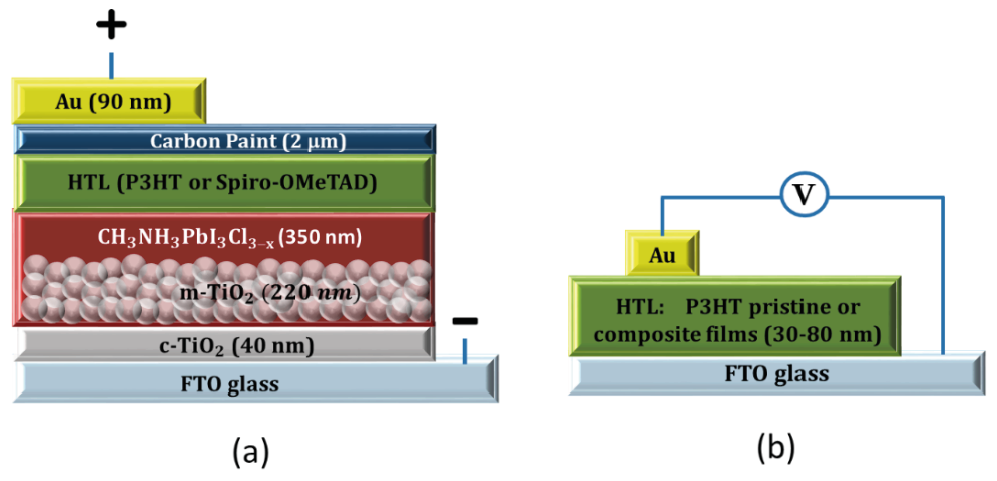 |
|
Hole transport layers (HTLs) play an important role in efficiency and stability of perovskite solar cells (PSCs). Most of the highly efficient PSCs use spiro-OMeTAD doped with Li-TFSI as HTLs, which has to be prepared under inert atmosphere, because the hygroscopic feature of the lithium salt deteriorates the stability of PSCs under ambient conditions. In this work, we report a comparative study of the electrical and morphological properties of different poly(3-hexylthiophene) (P3HT) thin films: pristine, doped with FeCl3, and composites with carbon nanotubes (CNT) or reduced graphene oxide (rGO). Although the electrical conductivity of P3HT films is found to increase with any of those modification methods, the photovoltaic performance of PSCs is highly dependent on the modification agent. P3HT:FeCl3 reduces the photocurrent density of PSCs, while the addition of rGO in P3HT improves charge extraction and stability of PSCs. Furthermore, the insertion of conductive carbon paint between P3HT and the metal contact maintains the original efficiency of non-encapsulated PSCs after continuous illumination for 30 min. It is concluded that carbon modifications in P3HT based HTL can improve the stability of perovskite solar cells totally fabricated under ambient conditions.
Keywords: perovskite solar cells, poly(3-hexylthiophene), reduced graphene oxide, carbon nanotube, composite polymer thin films.
|
|
 |

